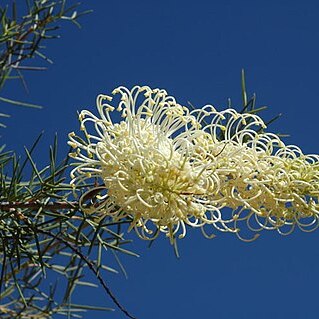A shrub. It grows 2-4 m high and spreads 1.5-3 m wide. It has many branches. The leaves are 6 cm long by 3.5 cm wide. The leaves are divided into narrow leaflets along the stalk. The leaves can be entire but divided into lobes. They have sharp tips. There are usually 5-9 segments 2.5 cm long. The flowers are creamy-white. The are borne in showy panicles at the ends of branches. The fruit are about 2 cm across. They break irregularly to loose 2 half round seeds.


